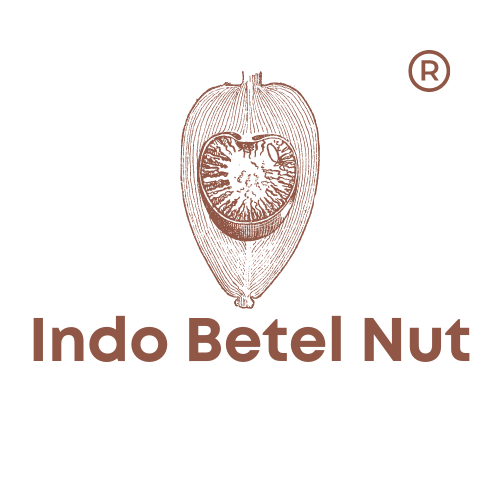Betel Nut Exporting Countries: The Ultimate Guide
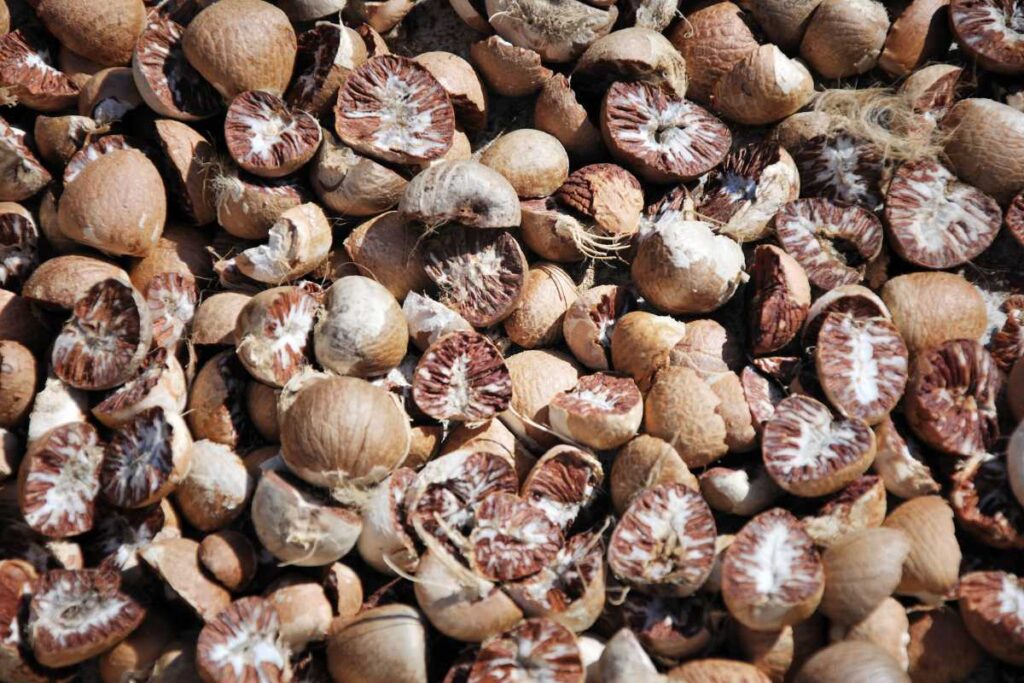
What is a betel nut?
Have you ever wondered what makes certain countries stand out in the world of exporting? Well, brazil nuts, cashew nuts, macadamia nuts, and coconuts exporting countries have certainly carved their place in the global market. But what exactly is a betel nut?
Betel nuts, also known as arecanuts, are not your ordinary nuts like macadamia nuts, peanut nuts, or even fruit nuts. They belong to an entirely different league altogether. Derived from the Areca palm tree, these little powerhouses pack quite a punch. Known for their stimulant effects, they have been consumed for centuries due to their mildly psychoactive properties.
Also referred to as arecanut or paan, these seeds contain alkaloids such as arecoline that can produce stimulating and euphoric sensations when chewed. Often combined with ingredients like betel leaf, tobacco, and lime paste, they form a concoction that has become deeply rooted in cultural rituals and traditional medicine. Additionally, coconuts, macadamia nuts, and peanuts are commonly used in various culinary dishes and snacks around the world.
Primarily grown in tropical regions of Asia and the Pacific, betel nuts, coconuts, peanuts, macadamia, and arecanuts have found their way into various industries around the world. From culinary uses to medicinal applications, these versatile seeds have become an integral part of many cultures.
So buckle up and join us on this journey as we explore the fascinating world of exporting countries for brazil nuts, cashew nuts, coconuts, and seeds. Get ready to uncover intriguing facts about these unique seeds and their impact on global trade!
Stay tuned for more exciting insights into the top view of this captivating industry, which offers a variety of shipments!
Historical and Cultural Significance
Betel nut chewing, a practice dating back thousands of years in many Asian cultures, holds immense historical and cultural significance. It is not just a simple habit; it is deeply woven into the traditions and customs of various communities. Let’s explore the rich tapestry of culinary nuts like cashew nuts, brazil nuts, and macadamia nuts associated with this ancient practice.
Symbol of Hospitality and Social Bonding
In numerous Asian countries, the act of betel nut chewing is considered a symbol of hospitality and social bonding. When guests arrive, it is customary to offer them a variety of betel nuts as a gesture of welcome. This gesture fosters a sense of camaraderie and friendship among individuals, creating a welcoming view. It serves as a way to break the ice, initiate conversations, and strengthen interpersonal relationships, adding a ton of value to social interactions.
Associated with Religious Ceremonies, Weddings, and Important Events
The cultural importance of betel nut chewing is particularly evident during religious ceremonies, weddings, and other significant events. In many Asian communities, offering a variety of betel nuts, including dried ones, to deities or ancestors is an integral part of religious rituals. The belief is that by presenting these sacred nuts, one can seek blessings or express gratitude to the divine powers.
During weddings, dried betel nuts play a vital role in traditional customs. They are exchanged between families as a symbolic gesture representing unity and harmony in marriage. The bride and groom often chew dried betel nuts together as an expression of their commitment to each other.
Moreover, important events such as festivals or community gatherings are incomplete without the presence of dried betel nuts. These occasions provide opportunities for people to come together, share stories, celebrate their heritage, and strengthen cultural bonds. STC
Featured Prominently in Ancient Texts, Folklore, and Traditional Art Forms
The significance of betel nut chewing, along with culinary nuts like brazil nuts, macadamia nuts, and areca nuts, extends beyond daily life; it has made its mark on literature, folklore, and traditional art forms throughout history. References to this practice can be found in ancient texts like religious scriptures or historical manuscripts. These writings often depict betel nut chewing, along with the consumption of culinary nuts, as a symbol of prosperity, wisdom, and social status.
Folklore and oral traditions have also woven tales around the dried betel nut, adding to its cultural allure. Stories are passed down from generation to generation, narrating the mythical origins or legendary properties associated with these dried nuts. Such narratives not only entertain but also help preserve cultural heritage and values.
Traditional art forms like paintings, sculptures, and intricate designs frequently incorporate images of dried betel nuts. Artists use their creativity to capture the essence of this stc practice and showcase its importance in society. These artistic expressions serve as visual reminders of the historical and cultural significance attached to betel nut chewing.
Creation of Specialized Tools for Preparation and Consumption
The deep-rooted cultural importance of chewing betel nuts, as well as culinary nuts like brazil nuts, areca nuts, and macadamia nuts, has led to the development of specialized tools for their preparation and consumption. Various regions have their unique methods, each accompanied by specific equipment designed for specific purposes.
For instance, in some countries, people use a mortar and pestle to grind the dried ingredients that accompany betel nuts before consumption. This process ensures that all flavors blend harmoniously together. The resulting mixture is then wrapped in a leaf called “paan” or “betel leaf,” creating an easily chewable bundle bursting with flavors. STC
In addition to mortars and pestles, spatulas or knives are used for cutting or slicing dried ingredients precisely, such as nuts fine. These tools, crafted with care using durable materials like wood or metal, ensure repeated usage of areca nuts without any issues.
The creation of these specialized tools showcases not only the practical aspects but also highlights the reverence given to this age-old tradition of chewing betel nuts. They represent craftsmanship passed down through generations—a testament to how deeply ingrained areca nuts are within Asian cultures. The nuts fine, dried, and used in betel nut chewing have a long history and are highly valued in Asian cultures. These tools, known as stc, are specifically designed for the preparation and consumption of betel nuts.
Uses of Betel Nut Globally
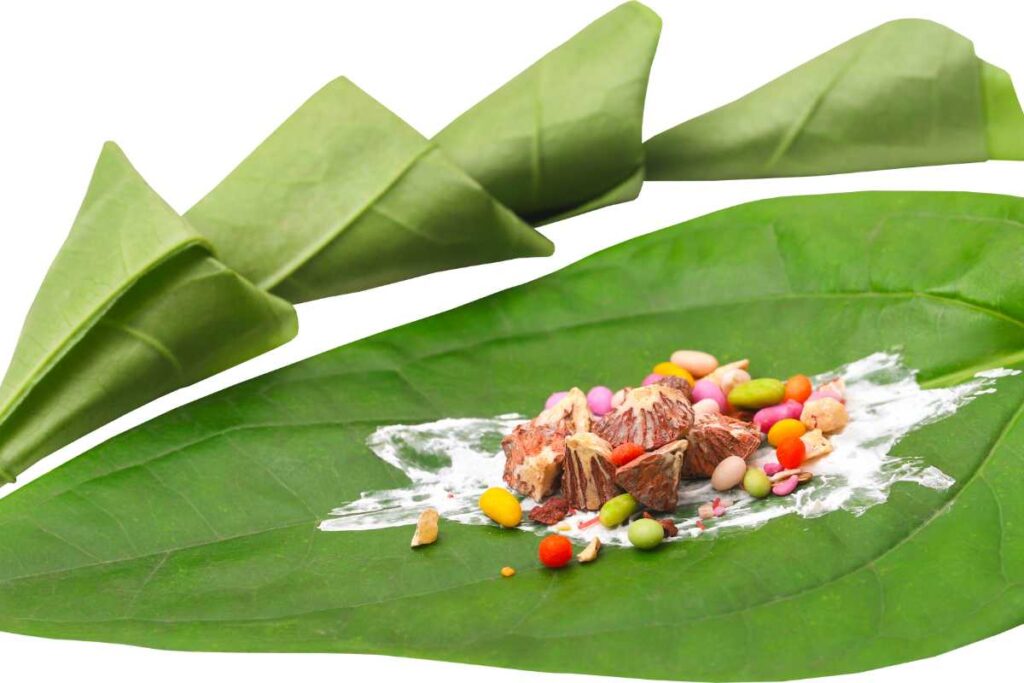
Widely consumed as a recreational drug or stimulant across Asia and parts of the Pacific region.
In many countries across Asia and the Pacific region, areca nuts are widely consumed as a recreational drug or stimulant. People chew areca nuts for various reasons, including their stimulating effects. When chewed, the nuts release alkaloids such as arecoline, which acts as a mild stimulant. This can result in increased alertness and a feeling of euphoria. The practice of chewing areca nuts is deeply rooted in cultural traditions and social gatherings, where they are often offered to guests as a sign of hospitality.
Used in traditional medicine for its supposed digestive properties or to alleviate toothache.
Betel nut, also known as areca nuts, has been used for centuries in traditional medicine. Its supposed digestive properties make it a popular choice. It is believed to aid digestion by increasing saliva production and facilitating smoother digestion. Additionally, betel nut can be used topically to alleviate toothache. Applying dried nuts fine directly to the affected area can provide relief. However, further scientific research is needed to validate these traditional uses.
Employed as an ingredient in herbal remedies due to its antimicrobial properties.
The antimicrobial properties of areca nuts have made them a popular ingredient in various herbal remedies. Studies have shown that extracts from areca nuts possess antibacterial activity against certain strains of bacteria. This makes them useful in combating oral infections caused by bacteria that lead to gum diseases or bad breath. In some cultures, dried areca nuts are mixed with other natural ingredients and applied externally to treat skin infections or wounds due to their potential antimicrobial effects.
Utilized in cosmetic products such as toothpaste or mouthwash for its refreshing effect on breath.
Betel nuts, also known as areca nuts, have a refreshing effect on breath. That’s why they are often included in cosmetic products like toothpaste and mouthwash. The natural properties of dried areca nuts combat bad breath by reducing oral bacteria and neutralizing odors. Extract from betel nuts is commonly added to oral care products for its minty flavor and freshening effect. By including areca nuts in these products, not only does it help maintain oral hygiene, but it also provides a pleasant and lasting feeling of freshness.
Some studies suggest potential anti-inflammatory and anticancer properties.
Emerging research has indicated that betel nut, also known as areca nuts, may possess potential anti-inflammatory and anticancer properties. Certain compounds found in betel nut, such as arecoline, have been studied for their ability to inhibit inflammation in the body. Chronic inflammation is associated with various diseases, including cancer, so the anti-inflammatory potential of betel nut compounds could have significant implications for future medical advancements. However, it’s important to note that more extensive studies are required to fully understand the mechanisms and potential applications of betel nut in combating inflammation and cancer.
Betel Nut Industry Size
The betel nut industry is a thriving sector that has experienced significant growth in recent years. With a global market value of over $14 billion in 2020, according to Grand View Research, it is clear that the demand for betel nuts is on the rise. This H2 will delve into the reasons behind this growth and explore how the industry provides employment opportunities for millions of people involved in various stages of cultivation, processing, packaging, and transportation.
Global Market Value
The betel nut market‘s impressive valuation of over $14 billion showcases its immense potential and profitability. This figure highlights the increasing popularity and consumption of betel nuts worldwide. The rising demand can be attributed to several factors, including cultural practices, medicinal properties, and economic significance.
In many countries across Asia and Africa, chewing betel nuts is deeply ingrained in traditional customs and social rituals. It serves as a symbol of hospitality and is often offered to guests during important occasions. Betel nuts are believed to have medicinal benefits such as improving digestion, providing energy boosts, and acting as a natural breath freshener.
Steady Growth
The betel nut industry continues to experience steady growth due to both domestic demand and international trade. In countries where betel nut consumption is deeply rooted in tradition, such as India, Indonesia, Bangladesh, Myanmar, and Thailand among others – there is consistently high local demand for these products. As populations grow and disposable incomes increase in these regions, so does the demand for betel nuts.
Furthermore, international trade plays a crucial role in driving the growth of the industry. Betel nuts are exported from producing countries to meet the demands of consumers around the world who appreciate their unique flavor profile. These exports contribute significantly to foreign exchange earnings for betel nut exporting countries.
Employment Opportunities
One of the most significant advantages of the expanding betel nut industry is its ability to provide employment opportunities for millions of people. The cultivation, processing, packaging, and transportation of betel nuts require a substantial workforce. This industry supports farmers, laborers, traders, and various other stakeholders involved in the supply chain.
In rural areas where alternative employment options may be limited, areca nut cultivation offers a source of income for many families. It provides livelihoods and sustains local economies by creating jobs that are essential to the community’s well-being. Moreover, the industry’s growth generates indirect employment opportunities in related sectors such as logistics and retail.
To summarize, the betel nut industry has experienced remarkable growth with a global market value exceeding $14 billion. The increasing demand from both domestic markets and international trade has been instrumental in driving this expansion. It is crucial to recognize that this growing industry plays a vital role in providing employment opportunities for millions of individuals involved in various stages of production and distribution. As the popularity of betel nuts continues to rise worldwide, so does its economic significance and impact on communities around the globe.
Role in Global Trade

Betel Nut Trade Data
Betel nuts, also known as areca nuts, play a significant role in international trade due to their high demand across various countries worldwide. The trade data clearly reflects the importance of betel nut exports in global commerce. Exporting countries have been able to capitalize on this demand and generate substantial foreign exchange earnings.
Economic Benefits for Exporting Countries
Exporting betel nuts brings significant economic benefits to the countries involved. As the demand for these nuts remains consistently high, exporting nations are able to boost their economies by meeting this demand and generating revenue from international sales. The income generated through betel nut exports contributes significantly to the overall balance of trade for these countries.
Meeting Domestic Consumption Needs
Importing countries heavily rely on the steady supply of betel nuts to meet their domestic consumption needs. These nations often have a cultural tradition or a widespread habit of chewing betel nuts, making it an essential part of daily life for many individuals. Therefore, ensuring a consistent supply is crucial for importing countries to satisfy local demands.
Fostering Economic Relationships
The trade of betel nuts fosters economic relationships between exporting and importing nations. It serves as a foundation for bilateral or multilateral trade agreements, creating mutually beneficial partnerships that go beyond the exchange of goods. By engaging in betel nut trade, exporting and importing countries establish economic ties that can lead to further collaborations and investments.
Areca nuts exports not only contribute directly to the economy but also indirectly support other sectors such as transportation, packaging, and logistics. This creates additional job opportunities and stimulates economic growth within both exporting and importing nations.
Conditions for Growth
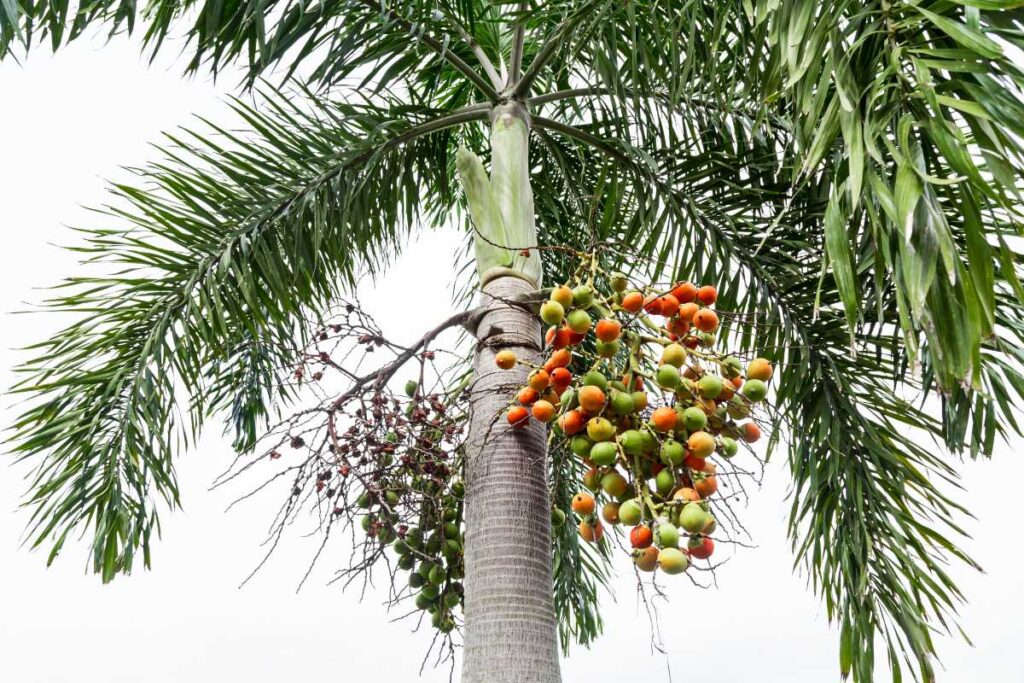
Ideal Climate and Soil Requirements
Betel nut, also known as areca nut, thrives in warm, humid climates with abundant rainfall. These conditions provide the necessary moisture and warmth for optimal growth. The minimum temperature required for betel nut cultivation is above 20°C (68°F). This ensures that the plant can withstand the environmental conditions and continue to grow healthily.
In addition to climate, well-drained soil is essential for successful betel nut cultivation. The roots of the betel nut tree, which areca nuts come from, require good drainage to prevent waterlogging, which can lead to root rot and hinder the overall growth of the plant. Therefore, farmers must ensure that the soil has proper drainage capabilities.
Rainfall and Altitude Considerations
Areca nut trees, also known as betel nut trees, flourish in regions with an annual rainfall ranging from 1500mm to 5000mm. This range provides an adequate amount of water throughout the year for the healthy growth and high-quality yields of areca nuts. However, it’s important to note that prolonged dry spells can negatively impact both the yield and quality of areca nuts. Areca nut trees are sensitive to such dry periods, so farmers need to take measures like irrigation or rainwater harvesting during these times.
Altitude also plays a significant role in betel nut cultivation. The suitable altitudes for growing areca nuts range from sea level up to approximately 600 meters (1968 feet). Beyond this range, the trees may struggle due to unsuitable climatic conditions or lack of oxygen at higher altitudes.
Sensitivity to Frost and Dry Spells
One crucial factor affecting betel nut production is its sensitivity to frost. Frost can damage not only the leaves but also the developing fruits of the areca nuts tree. Therefore, areas prone to frost are generally unsuitable for commercial betel nut farming.
Moreover, prolonged dry spells pose a threat to the growth and productivity of betel nut trees. Lack of sufficient water during extended periods without rainfall can lead to stunted growth and reduced productivity in betel nut trees. To mitigate the impact of dry spells, farmers can employ irrigation techniques such as drip irrigation or mulching to conserve soil moisture and provide adequate hydration to the betel nut trees.
Countries where betel nuts are cultivated
Betel nuts, also known as areca nuts, are primarily cultivated in several countries around the world. These countries have favorable climatic conditions that support the growth and production of betel nuts. Let’s explore some of the major betel nut exporting countries and their unique approaches to cultivation.
Major producers include India, Indonesia, Bangladesh, Myanmar, Thailand, Vietnam, Sri Lanka, Papua New Guinea, and Malaysia.
India stands out as one of the major producers. The country’s diverse climate allows for the cultivation of various betel nut varieties across different regions. In Indonesia, another significant producer of betel nuts, farmers employ traditional methods passed down through generations to grow high-quality crops.
Bangladesh is also known for its thriving betel nut industry. The country’s fertile soil and suitable weather conditions contribute to its success in producing these nuts. Similarly, Myanmar has vast areas dedicated to cultivating betel nuts due to its tropical climate and abundant rainfall.
Thailand is renowned for its unique approach to growing betel nuts. Farmers here often intercrop with other plants like rubber trees or fruit trees to maximize land utilization while diversifying their income sources. Vietnam follows similar practices by integrating betel nut plantations with other agricultural activities.
Sri Lanka boasts a long history of cultivating betel nuts and has developed specific techniques over time. The island nation’s well-established infrastructure supports efficient processing and exportation of these nuts globally.
Papua New Guinea is an emerging player in the global market for cola (betel) nuts. Its rich volcanic soil provides ideal conditions for growing high-quality crops that are highly sought after worldwide.
Malaysia completes this list of major producers with its extensive plantations spread across different states. The country’s commitment to sustainable farming practices ensures a continuous supply of quality betel nuts year after year.
Each country has its own unique production methods and varieties grown.
While betel nuts are cultivated across multiple countries, each nation brings its own distinct techniques and approaches to the table. In India, for example, farmers employ traditional farming methods that have been refined over generations. They carefully select suitable land, prepare it by plowing and leveling, and then sow betel nut seeds.
In Indonesia, on the other hand, a more organic approach is taken. Farmers use natural fertilizers such as cow dung or compost to enrich the soil. They also rely on traditional knowledge to determine the best time for planting and harvesting betel nuts.
Bangladesh follows a similar path with organic cultivation practices. Farmers avoid chemical pesticides and instead rely on natural pest control methods like neem oil or intercropping with pest-repellent plants. Additionally, farmers in Bangladesh also cultivate areca nuts using these organic practices.
Myanmar’s betel nut cultivation involves a mix of traditional and modern techniques. Small-scale farmers often grow betel nuts in home gardens or small plots of land using sustainable practices like mulching and crop rotation.
Cultivation practices often involve small-scale farmers who contribute significantly to the industry’s output.
One notable aspect of betel nut cultivation is the involvement of small-scale farmers who play a crucial role in meeting global demand. These farmers cultivate betel nuts on relatively smaller plots of land but collectively contribute substantially to the industry’s output.
Small-scale farmers typically rely on manual labor for various activities such as planting, weeding, pruning, and harvesting. This labor-intensive process ensures attention to detail at every stage of cultivation. It also provides employment opportunities within rural communities where these crops are grown.
The income generated from betel nut farming, also known as areca nuts, supports many families in these regions, improving their livelihoods and stimulating local economies. Small-scale farming practices often prioritize sustainability by avoiding excessive use of chemicals or harmful agricultural practices.
Top Exporting Countries and Their Market Shares

India, Indonesia, Vietnam, Myanmar, Bangladesh, Thailand, and Malaysia are the major players in the betel nut exporting industry. Let’s take a closer look at these countries and their respective market shares.
India: The Giant Betel Nut Exporter
India stands tall as the largest exporter of betel nuts globally, holding an impressive market share of around 40%. This is no surprise considering India’s long-standing tradition of betel nut cultivation and consumption. With its vast agricultural lands and favorable climate conditions, India has managed to dominate the global market for years.
The Indian betel nut industry thrives due to several factors. Firstly, the country has a large population that actively consumes betel nuts as part of their cultural practices. This internal demand provides a solid foundation for Indian exporters to expand their reach internationally. India’s expertise in betel nut farming techniques and processing methods ensures high-quality produce that appeals to buyers worldwide.
Indonesia: A Strong Contender
Indonesia holds its ground as a significant player in the global betel nut export market with a market share of approximately 25%. The country’s tropical climate provides ideal conditions for cultivating this crop on a large scale. Indonesian farmers have mastered the art of growing high-quality betel nuts that meet international standards.
Moreover, Indonesia benefits from its strategic geographical location. Its proximity to other Southeast Asian countries allows for efficient transportation and distribution networks. As a result, Indonesian exporters can easily supply neighboring nations with their abundant betel nut harvests.
Vietnam: Making Its Mark
Vietnam has emerged as another key exporter in the global betel nut trade with a respectable market share of around 10%. The country’s fertile soil and favorable weather conditions contribute to successful cultivation. Vietnamese farmers diligently nurture their crops using traditional methods handed down through generations.
In recent years, Vietnam has made significant strides in improving its betel nut processing techniques. This has resulted in a higher quality product that appeals to international buyers seeking premium betel nuts. As a result, Vietnam’s market share continues to grow steadily.
Myanmar, Bangladesh, Thailand, and Malaysia: Contributing Players
While India, Indonesia, and Vietnam take the lead in the global betel nut export market, several other countries also make valuable contributions.
Myanmar holds a market share of approximately 5% and boasts an abundance of fertile land suitable for cultivating betel nuts. The country’s production primarily serves regional demand while also finding its way into international markets.
Bangladesh follows closely behind with a market share of around 4%. The country’s long-standing tradition of chewing betel nuts has fostered a thriving domestic industry. With its surplus production capacity, Bangladesh is able to export significant quantities to meet global demand.
Thailand and Malaysia each hold smaller shares of approximately 3% and 2%, respectively. These countries benefit from their proximity to major consumer markets such as India and Indonesia. While their exports may be relatively modest compared to other players, they still play an important role in meeting regional demands.
Brief history and evolution of betel nut exportation in these countries

India: A Rich Heritage of Betel Nut Cultivation
India has a fascinating and extensive history. Dating back thousands of years, the country has been deeply rooted in the production and exportation of this versatile crop. The warm and humid climate, particularly in regions such as Kerala and Karnataka, provided ideal conditions for betel nut trees to thrive.
During ancient times, India established itself as a prominent exporter of betel nuts through maritime trade routes. These routes allowed traders to transport large quantities of betel nuts to various destinations across the globe. This flourishing trade not only contributed to India’s economic growth but also played a significant role in spreading the popularity of betel nuts worldwide.
Indonesia: Favorable Conditions Fuel Export Success
Indonesia emerged as a major player in the global betel nut market due to its favorable growing conditions and high domestic consumption rates. The country boasts lush rainforests and fertile soil, creating an ideal environment for cultivating betel nut trees.
With a large local demand for betel nuts, Indonesia naturally transitioned into exporting this commodity on a larger scale. Its strategic location within Southeast Asia further facilitated trade with neighboring countries like Malaysia, Singapore, and Thailand.
Vietnam: Modernization Drives Export Expansion
Vietnam recognized the potential of the global betel nut market and took proactive steps towards expanding its exports. By adopting modern farming techniques and investing in improved processing facilities, Vietnam was able to significantly boost its production capacity.
This shift towards modernization not only increased efficiency but also enhanced the quality of Vietnamese betel nuts. As a result, Vietnam successfully captured new markets around the world while satisfying existing customer demands.
Myanmar (Burma): Navigating Fluctuations in Exports
Myanmar’s journey as a major exporter of betel nuts has been marked by fluctuations due to political and economic factors. The country’s betel nut industry experienced both highs and lows, with export volumes varying over time.
Political instability and economic challenges have posed obstacles for Myanmar’s betel nut exports. However, the resilience of farmers and exporters in adapting to changing circumstances has allowed them to navigate these difficulties and continue contributing to the global market.
Bangladesh: Quality Improvement for Enhanced Exports
Bangladesh recognized that focusing on quality improvement was crucial for increasing its betel nut exports. By implementing stringent standards and regulations, the country aimed to meet international requirements and ensure the satisfaction of its customers abroad.
Through initiatives such as improved farming practices, better post-harvest handling, and enhanced packaging techniques, Bangladesh successfully elevated the quality of its betel nuts. This commitment to excellence enabled the country to expand its exportation efforts while gaining a reputation for delivering premium products.
Thailand: Catering to Regional Demand
Thailand primarily exported betel nuts to neighboring countries, capitalizing on regional demand. Its strategic location within Southeast Asia made it an ideal hub for distributing betel nuts across borders.
By understanding the preferences and tastes of nearby markets, Thai exporters were able to tailor their offerings accordingly. This targeted approach allowed them to establish strong trade relationships with neighboring nations while fulfilling their specific demands for betel nuts.
Malaysia: Carving a Niche Market for Premium Quality
Malaysia distinguished itself by developing a niche market centered around premium quality betel nuts. Recognizing that certain consumers sought superior products, Malaysian growers focused on cultivating high-quality varieties known for their exceptional taste and texture.
Through meticulous cultivation practices, rigorous quality control measures, and innovative packaging designs, Malaysia successfully positioned itself as a provider of top-tier betel nuts. This niche market strategy enabled Malaysian exporters to differentiate themselves from competitors while catering to discerning customers who valued excellence.
Major Importing Countries
Pakistan, Bangladesh, China, Afghanistan, Iran, Nepal, Malaysia, and Sri Lanka are among the major importers of betel nuts. These countries have a cultural tradition of betel nut consumption or use them as ingredients in traditional remedies.
Betel Nut Importers
Let’s take a closer look at some of the countries that play a significant role in importing betel nuts:
-
Pakistan: Known for its vibrant culture and traditions, Pakistan is one of the leading importers of betel nuts. The country has a rich history of betel nut consumption, with people enjoying it as a popular snack or incorporating it into their daily routines. Whether it’s during social gatherings or simply as a way to relax after a meal, betel nuts hold great significance in Pakistani society.
-
Bangladesh: Betel nut consumption is deeply rooted in Bangladeshi culture. It is commonly used during religious ceremonies and social events. In fact, offering betel nuts to guests is considered a gesture of hospitality and respect. The country imports substantial quantities of betel nuts to meet the demand for this cherished tradition.
-
China: As one of the largest consumer markets in the world, it comes as no surprise that China is also among the major importers of betel nuts. Betel nut chewing has been practiced in various regions across China for centuries. While its popularity may vary from region to region, there are still millions who enjoy chewing on these flavorful nuts.
-
Afghanistan: In Afghanistan, betel nut chewing holds both cultural and medicinal importance. It is often consumed socially during gatherings or used as an ingredient in traditional remedies due to its perceived health benefits. This has led to a steady demand for imported betel nuts within the country.
-
Iran: Betel nut consumption has been prevalent throughout Iran’s history and remains popular today. Iranians often enjoy betel nuts with tea or as a post-meal treat. The country imports significant quantities of betel nuts to cater to the demand of its enthusiastic consumers.
-
Nepal: Betel nut chewing is deeply ingrained in Nepalese culture and has been passed down through generations. It is commonly enjoyed during festivals, religious ceremonies, and social gatherings. Nepal imports betel nuts to ensure an uninterrupted supply for its avid chewers.
-
Malaysia: Betel nut consumption in Malaysia is closely tied to cultural practices and traditions. Malaysians often chew betel nuts after meals as a palate cleanser or breath freshener. The country’s demand for betel nuts leads to substantial imports from various exporting countries.
-
Sri Lanka: Betel nut chewing holds great significance in Sri Lankan culture and is considered a symbol of hospitality. It is customary to offer guests betel nuts as a gesture of welcome and respect. Sri Lanka imports betel nuts to meet the demand for this traditional practice.
Betel nut consumption varies across these importing countries, but they all share a common appreciation for the cultural significance and traditional uses of these versatile nuts.
Consumption patterns in importing countries

Betel nut consumption varies across different regions and cultures.
Betel nut, also known as areca nut, is consumed in various ways across different regions and cultures around the world. The preferences for betel nut consumption can vary greatly, influenced by factors such as tradition, availability, affordability, and health concerns related to its usage.
In some countries, chewing whole betel nuts is a popular practice. It is often seen as a social activity or a way to pass the time. Chewing betel nuts involves wrapping them in betel leaves along with other ingredients like tobacco or spices. This mixture is then chewed to release the stimulating effects of the betel nut. Countries such as India, Bangladesh, Myanmar, and parts of Southeast Asia have a long-standing tradition of chewing whole betel nuts.
On the other hand, there are countries where betel nuts are primarily used as an ingredient in various preparations like paan or tobacco mixtures. Paan is a popular snack in South Asian countries like India and Pakistan. It typically consists of sliced areca nuts wrapped in betel leaves along with other ingredients like slaked lime paste (chuna), tobacco, and spices such as cardamom or fennel seeds. Paan has cultural significance and is often offered as a gesture of hospitality during celebrations or social gatherings.
Consumption may be influenced by social customs, availability, affordability, and health concerns related to its usage.
The consumption patterns of betel nuts can be deeply rooted in social customs and traditions. In many cultures where chewing whole betel nuts is prevalent, it serves as a symbol of hospitality or respect when offered to guests. It can also be seen as an integral part of religious ceremonies or rituals.
Availability plays a significant role in determining consumption patterns. Countries that cultivate large quantities of betel nuts tend to have higher rates of consumption due to easy access to the product. For example, countries like India and Bangladesh are major producers of betel nuts, leading to a higher prevalence of consumption in these regions.
Affordability is another crucial factor influencing consumption patterns. In some countries, betel nuts are relatively inexpensive compared to other stimulants or recreational substances. This affordability makes it an accessible option for individuals seeking a mild stimulant effect.
Health concerns related to the usage of betel nuts can also impact consumption patterns. The World Health Organization (WHO) has classified betel nut chewing as a carcinogenic practice due to its association with oral cancer and other health risks. As awareness about these risks increases, some countries have implemented regulations or public health campaigns to discourage betel nut consumption.
Influencing factors for demand

Cultural practices and traditions
Cultural practices and traditions have a significant impact on the demand for betel nuts. In many countries, betel nut chewing is deeply ingrained in the cultural fabric and is considered an important social activity. It is often used during religious ceremonies, festivals, weddings, and other special occasions. The betel nut holds symbolic value in these contexts, representing hospitality, friendship, and goodwill.
For example, in India, the practice of offering betel nuts to guests is seen as a gesture of respect and hospitality. Similarly, in parts of Southeast Asia such as Indonesia and Malaysia, betel nut chewing has been a long-standing tradition among certain ethnic communities. These cultural practices contribute to the sustained demand for betel nuts as they are deeply rooted in societal norms.
Economic factors
Economic factors also play a crucial role in shaping the demand for betel nuts. Income levels and affordability directly influence consumption patterns. In countries where disposable income is low or unevenly distributed, betel nuts may be more affordable compared to other recreational substances or luxury goods.
In regions with higher poverty rates or limited access to alternative forms of entertainment or relaxation, such as rural areas or developing countries, betel nut chewing becomes a popular pastime due to its relatively low cost. This affordability factor contributes to the sustained demand for betel nuts among certain demographics.
Health concerns
The health concerns associated with long-term usage can significantly impact the demand for betel nuts both positively and negatively. Betel nut chewing has been linked to various health issues including oral cancer, gum disease, tooth decay, and addiction. The severity of these health risks depends on several factors such as frequency of use, duration of usage, preparation methods (such as adding tobacco), and individual susceptibility.
Public awareness campaigns highlighting these health risks can lead to a decline in demand for betel nuts as individuals become more conscious of the potential harm. Governments and health organizations often regulate the sale and consumption of betel nuts to mitigate these health risks.
However, it is worth noting that despite these concerns, betel nut chewing continues to be popular in many regions due to deeply ingrained cultural traditions and lack of awareness about the associated health risks. In some cases, betel nut vendors may even promote perceived benefits such as improved digestion or increased energy levels to counterbalance the negative publicity surrounding its usage.
Historical trends
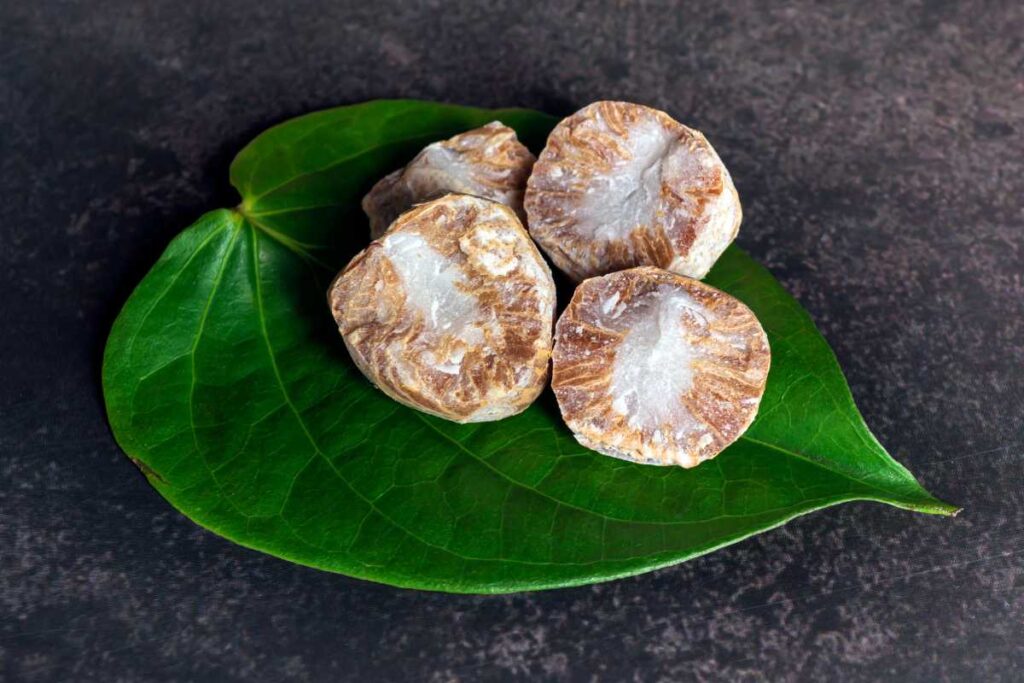
Steady growth in betel nut trade
The betel nut trade has experienced remarkable growth over the years, fueled by factors such as increasing global connectivity and migration patterns. This upward trajectory can be attributed to the expanding networks of transportation and communication, which have made it easier for betel nut exporting countries to reach new markets around the world.
As people from different regions have migrated and settled in various parts of the globe, they have brought with them their cultural practices, including the consumption of betel nuts. This has created a growing demand for betel nuts in previously untapped markets, leading to an increase in their exportation.
Furthermore, advancements in technology have played a significant role in facilitating the trade of betel nuts. Improved transportation infrastructure allows for faster and more efficient delivery of goods, while advancements in communication technology enable exporters to connect with potential buyers across continents. These developments have made it possible for exporting countries to expand their reach and establish themselves as key players in the global betel nut market.
Shifting market shares due to changing consumer preferences
Consumer preferences play a crucial role in shaping the dynamics of any industry, including the betel nut trade. Over time, changes in consumer tastes and preferences have led to shifts in market shares among exporting countries.
In the past, certain countries held dominant positions as major exporters of betel nuts. However, as consumer preferences evolved, new players emerged on the scene. These emerging exporters were quick to adapt to changing demands and capitalize on new opportunities presented by shifting market trends.
For instance, some exporting countries recognized that consumers were increasingly seeking organic and sustainably sourced products. In response, they invested heavily in organic farming practices and obtained certifications attesting to their commitment to environmental sustainability. By doing so, these countries positioned themselves as attractive suppliers for environmentally conscious consumers who prioritize ethical sourcing.
Moreover, globalization has exposed consumers to a wider range of choices. As a result, exporting countries that were once dominant in the market had to diversify their offerings and adapt to the demand for different types of betel nuts. This allowed newer players to enter the market and gain a foothold by offering unique and sought-after varieties.
Current trends and factors driving them

Growing interest in natural remedies and traditional medicine
In today’s world, where people are becoming more health-conscious and seeking alternative treatments, the demand for betel nuts has been on the rise. Betel nuts have long been used in traditional medicine for their various medicinal properties. They are believed to have anti-inflammatory, analgesic, and antimicrobial effects, making them a popular choice among those looking for natural remedies.
The growing interest in natural remedies can be attributed to several factors. Firstly, many individuals are becoming wary of the potential side effects associated with synthetic drugs and are turning towards herbal alternatives. Betel nuts provide a natural solution that is perceived as safer and less harmful.
There has been a resurgence of interest in traditional medicine practices from different cultures around the world. People are increasingly recognizing the wisdom behind ancient healing methods and embracing them as viable options for maintaining their well-being. As betel nuts have been used for centuries in various traditional systems of medicine, their popularity has surged alongside this trend.
Furthermore, the accessibility of information through the internet has played a significant role in spreading awareness about the benefits of betel nuts. Individuals now have easy access to research studies, personal testimonials, and expert opinions that highlight the positive effects of consuming betel nuts. This availability of information has contributed to an increased demand for these natural remedies.
Rising disposable incomes expanding consumer base
As economies continue to grow and global wealth increases, disposable incomes have risen significantly across many countries. This rise in disposable incomes has led to an expansion of the consumer base for recreational substances like betel nuts.
With more money at their disposal, individuals now have greater purchasing power and are willing to explore new experiences. Betel nuts offer a unique recreational experience due to their stimulating properties when chewed or consumed in other forms. This novelty factor combined with higher disposable incomes has resulted in an increased demand for betel nuts among a broader range of consumers.
Moreover, as lifestyles become more hectic and stressful, people are seeking ways to unwind and relax. Betel nuts provide a quick and easily accessible means of relaxation, making them an attractive option for individuals looking to de-stress after a long day. The affordability of betel nuts compared to other recreational substances also makes them appealing to individuals with rising disposable incomes.
In addition to personal consumption, the rise in disposable incomes has also fueled the growth of industries associated with betel nut products. This includes the production and export of betel nuts, creating economic opportunities for countries that are major exporters of these products. As demand continues to grow, these exporting countries stand to benefit from increased trade and revenue.
Predicted future trends
The global betel nut market is poised for significant growth in the coming years, driven by factors such as increasing urbanization and evolving lifestyles in developing nations. According to a report by Grand View Research, these trends are expected to shape the industry landscape and create new opportunities for betel nut exporting countries.
Growing urbanization and changing lifestyles
As urbanization continues to accelerate across developing nations, there is a corresponding shift in consumer preferences and behaviors. The rise of cities brings about changes in lifestyle patterns, leading to an increased demand for products like betel nuts. With more people migrating from rural areas to urban centers, there is a growing need for convenient and easily accessible sources of chewing stimulants.
Betel nuts have long been ingrained in the cultural traditions of many Asian countries. However, as these societies become more urbanized, the consumption of betel nuts has transcended traditional boundaries and gained popularity among diverse demographic groups. This expanding consumer base presents a promising market opportunity for betel nut exporting countries.
Exploring visualizations
To gain a deeper understanding of the potential growth trajectory of the betel nut market, let’s explore some visualizations:
-
Urban population growth: Visualizing the rapid increase in urban population across key developing nations can help us gauge the extent of urbanization’s impact on betel nut consumption. By comparing historical data with projected figures, we can identify regions with significant potential for market expansion.
-
Changing consumer preferences: Analyzing consumer behavior through visual representations allows us to discern emerging trends and adapt our strategies accordingly. We can examine factors such as age demographics, income levels, and cultural influences to better understand how shifting lifestyles contribute to the demand for betel nuts.
-
Market share analysis: Visualizing market shares of different betel nut exporting countries provides valuable insights into competitive dynamics. By studying historical trends alongside predicted future scenarios, we can identify countries likely to experience substantial growth and those that may face challenges.
-
Trade flow patterns: Mapping the trade routes and volumes of betel nut exports can reveal opportunities for market expansion. Visualizing trade flows helps identify potential gaps in supply chains, enabling exporting countries to optimize their distribution networks and capture untapped markets.
By leveraging these visualizations, betel nut exporting countries can gain a competitive edge in the evolving marketplace, aligning their strategies with emerging trends and maximizing their growth potential.

Revenue generated
The betel nut industry is a major contributor to the revenue of exporting countries, playing a crucial role in their economic development. The substantial income generated from betel nut exports has a significant impact on these nations, providing them with valuable resources and opportunities for growth.
One of the key factors that contribute to the revenue generated by the betel nut industry is the gross weight of the exported nuts. The sheer volume of betel nuts produced and shipped by these countries adds up to substantial earnings. As betel nuts are harvested and processed, they are carefully weighed before being packaged and transported for export. This gross weight measurement plays a vital role in determining the value of each shipment.
Exporting countries capitalize on their abundant natural resources and favorable climate conditions to cultivate high-quality betel nuts. These nuts are then sold at competitive prices in international markets, attracting buyers from various regions around the world. The demand for betel nuts remains strong due to their cultural significance and use in traditional practices across different communities.
To maximize revenue, exporting countries often establish trade agreements with importing nations, ensuring a steady flow of orders for their betel nut produce. These agreements help stabilize prices and provide assurance to both producers and buyers regarding supply availability. By maintaining strong relationships with importers, exporting countries can secure consistent sales volumes, thereby boosting their overall revenue.
Furthermore, exporting countries invest in modern processing facilities that enable them to efficiently sort, grade, and package betel nuts according to specific market requirements. This ensures that only premium quality products reach consumers worldwide while also commanding higher prices. By focusing on quality control measures throughout the production process, exporting countries can enhance their reputation as reliable suppliers of superior-grade betel nuts.
In addition to direct exports of raw or processed betel nuts, some exporting countries have diversified their product offerings by developing value-added items derived from this versatile crop. For instance, they may produce products such as flavored chewing mixes, breath fresheners, or natural dyes made from betel nut extracts. These value-added products not only generate additional revenue but also cater to a broader consumer base seeking innovative and unique betel nut derivatives.
The revenue generated by the betel nut industry has far-reaching effects on the economies of exporting countries. It allows for investments in infrastructure development, education, healthcare, and other critical sectors that contribute to overall societal progress. Moreover, the income generated from betel nut exports often trickles down to local communities, improving their standard of living and creating employment opportunities.
Impact on GDP
The betel nut industry plays a significant role in the economic growth of exporting countries, contributing to their Gross Domestic Product (GDP) and providing employment opportunities. With millions of kilograms (kgs) of betel nuts being exported annually, the impact on the economy is undeniable.
Economic Growth Boost
Betel nut exports act as a catalyst for economic growth in these countries. The revenue generated from exporting betel nuts directly contributes to the GDP, which measures the total value of goods and services produced within a country’s borders. As more betel nuts are exported, the GDP increases, indicating a thriving economy.
The demand for betel nuts both domestically and internationally fuels this growth. Exporting countries leverage their natural resources to meet this demand, resulting in increased production and trade activities. This surge in economic activity stimulates various sectors such as agriculture, transportation, packaging, and logistics. Consequently, it leads to job creation across these industries.
Employment Opportunities
One of the key benefits that betel nut exports bring to exporting countries is employment generation. The entire process from cultivation to packaging and shipping requires a considerable workforce. Farmers play an essential role in growing and harvesting betel nuts while creating jobs for themselves and others within their communities.
Moreover, processing facilities employ workers who sort, clean, and package the harvested betel nuts before they are ready for exportation. This labor-intensive process provides income opportunities for many individuals who rely on these jobs to support themselves and their families.
The transportation sector also benefits from this trade as truck drivers are required to transport large quantities of betel nuts from production areas to ports or distribution centers. This creates additional employment opportunities within the transportation industry.
By generating employment at various stages of production and distribution, betel nut exports contribute significantly towards reducing unemployment rates in exporting countries.
Supporting Local Economy
The positive impact on GDP extends beyond direct contributions by stimulating local economies. When betel nut exports thrive, it creates a ripple effect that benefits other sectors and businesses within the exporting countries.
For instance, local suppliers of packaging materials, such as bags or boxes, experience increased demand as exporters require suitable packaging for shipping betel nuts. This boosts their business and provides them with opportunities for growth.
Furthermore, the revenue generated from betel nut exports circulates within the local economy. Exporters invest in infrastructure development, education, healthcare facilities, and other essential services. This infusion of funds enhances the overall living standards of the population.
The economic growth driven by betel nut exports also attracts investments from both domestic and foreign entities. As investors witness the potential for profitability in these countries, they allocate resources towards establishing new businesses or expanding existing ones. This further stimulates economic growth and diversifies the economy beyond just betel nut production.
Conclusion
In conclusion, betel nut exporting countries play a significant role in the global trade market. These countries have a long history and cultural significance associated with betel nut cultivation and consumption. Betel nuts are widely used globally for various purposes, including traditional practices, medicinal uses, and recreational activities.
The betel nut industry is substantial in size, generating significant revenue and contributing to the GDP of exporting countries. The top exporting countries hold varying market shares, with each country having its own unique history and evolution of betel nut exportation.
Major importing countries drive the demand for betel nuts, influenced by factors such as cultural preferences, economic conditions, and historical trends. Consumption patterns in these importing countries can fluctuate based on changing societal norms and consumer preferences.
Currently, there are several trends impacting the betel nut industry. Factors such as increasing health awareness and changing regulations may influence future consumption patterns. It is important for exporting countries to adapt to these trends to ensure sustainable growth in the industry.
Looking ahead, the future of betel nut exportation holds both opportunities and challenges. Predicted future trends suggest a shift towards alternative products or reduced consumption due to health concerns. Exporting countries need to stay updated on market demands and diversify their offerings accordingly.
Overall, the revenue generated from betel nut exports has a significant impact on the GDP of exporting nations. As this industry continues to evolve, it is crucial for exporters to focus on maintaining quality standards while exploring new markets and product innovations.
Call-to-Action: For individuals interested in exploring business opportunities or understanding more about the betel nut industry’s global impact, it is essential to stay informed about emerging trends, regulations, and market dynamics in order to make well-informed decisions.
FAQs
1. Is chewing betel nut harmful?
Chewing betel nut can have adverse health effects such as oral cancer risk, addiction potential due to its stimulating properties, and oral health issues.
2. What are the major betel nut exporting countries?
The major betel nut exporting countries include India, Indonesia, Bangladesh, Vietnam, and Thailand.
3. Are there any regulations on betel nut exports?
Regulations regarding betel nut exports vary across different countries. It is important to be aware of specific regulations in both the exporting and importing countries.
4. Can betel nuts be used for medicinal purposes?
Betel nuts have been traditionally used for their medicinal properties in certain cultures. However, it is crucial to consult with a healthcare professional before using them for any medical purposes.
5. How does the consumption of betel nuts impact the environment?
The cultivation and processing of betel nuts can have environmental consequences such as deforestation, soil degradation, and water pollution if not managed sustainably.
6. Are there any alternative products to betel nuts?
Yes, there are alternative products available that offer similar sensory experiences or cultural significance without the health risks associated with chewing betel nuts.
7. What are some emerging trends in the global betel nut industry?
Some emerging trends in the global betel nut industry include a shift towards healthier alternatives, increased focus on sustainable sourcing practices, and innovative product offerings catering to changing consumer preferences.
